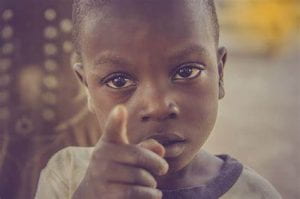
In Africa, low birth expectancy remains a significant burden, particularly for children. Several factors contribute to this bleak reality, including communicable diseases, maternal health issues, HIV/AIDS, Malaria, and Tuberculosis. The problem is further made worse by socioeconomic variables like early marriage, teenage pregnancies, low levels of schooling, and high rates of child dropouts from school. Africa grapples with multifaceted issues that jeopardize the well-being of its youth. We will look at the complicated causes of child mortality in Africa and compare them to advanced countries to underscore the importance of addressing these challenges and the potential pathways toward improvement.
Many African youngsters still lose their lives to communicable diseases. Malnutrition, inadequate resources, poor sanitation, and inadequate access to healthcare services all contribute to the spread of diseases like HIV/AIDS, Malaria, and Tuberculosis. Advanced countries, on the other hand, profit from extensive public health initiatives and well-established healthcare systems that efficiently monitor, manage, and control disease epidemics. Child mortality rates are also significantly influenced by maternal and prenatal circumstances, underscoring the need for enhanced maternal healthcare services and nutrition initiatives.
Globally, Africa is heavily impacted by HIV/AIDS, Malaria, and Tuberculosis cases. These diseases not only have an adverse effect on children’s health and wellbeing but also impede economic growth. In order to effectively tackle these diseases, more funding must be allocated to the healthcare system, as well as access to affordable medication and thorough preventative and treatment plans.
There are significant differences between the healthcare and socioeconomic systems in Africa and more advanced countries. The latters enjoy the advantages of a strong healthcare system, universal access to medical care, and extensive public health initiatives that efficiently contain and manage disease outbreaks. On the other hand, African countries struggle to provide universal access to necessary medical services and prescription drugs due to a lack of resources and fragmented healthcare systems.
Moreover, Socioeconomic factors have a significant impact on health outcomes, particularly for children in Africa. Early marriage and teen pregnancy increase maternal and child health hazards. Early marriage often leads to early pregnancies, increasing the risk of problems during labor for both young mothers and children. Furthermore, limiting access to education reinforces cycles of poverty and impedes efforts to improve health outcomes.
In advanced nations, extensive sex education programs, access to birth control, and higher literacy rates all lead to better maternal and child health outcomes.
Investment in education and healthcare is critical for increasing child survival rates in Africa. Unfortunately, many countries do not commit sufficient resources to these areas, resulting in low education spending and limited access to effective healthcare services. Increased government investment on education and health, together with international support and collaboration, is critical to resolving these discrepancies.
In addition to the numerous problems that African children face, it is critical to highlight the disparity in educational opportunities for girls. Surprisingly, the majority of African children who drop out of primary school are girls, indicating long-standing gender disparities in educational opportunities. Cultural conventions, early marriages, and socioeconomic constraints frequently cause girls to drop out of school, denying them the opportunity to gain critical knowledge and skills. This gap not only perpetuates poverty cycles, but it also increases the health risks for girls and their future children. Addressing the gender gap in education is critical for ending the cycle of child death and promoting sustainable development in Africa.
Addressing short life expectancy at birth in Africa necessitates a holistic approach that addresses both health and socioeconomic factors. Investing in healthcare infrastructure, expanding educational opportunities, empowering women and girls, and enhancing public health systems are all key measures toward increasing child survival rates. Prioritizing these activities and developing international cooperation can help us achieve improved health outcomes and a brighter future for African children.
0 Comments